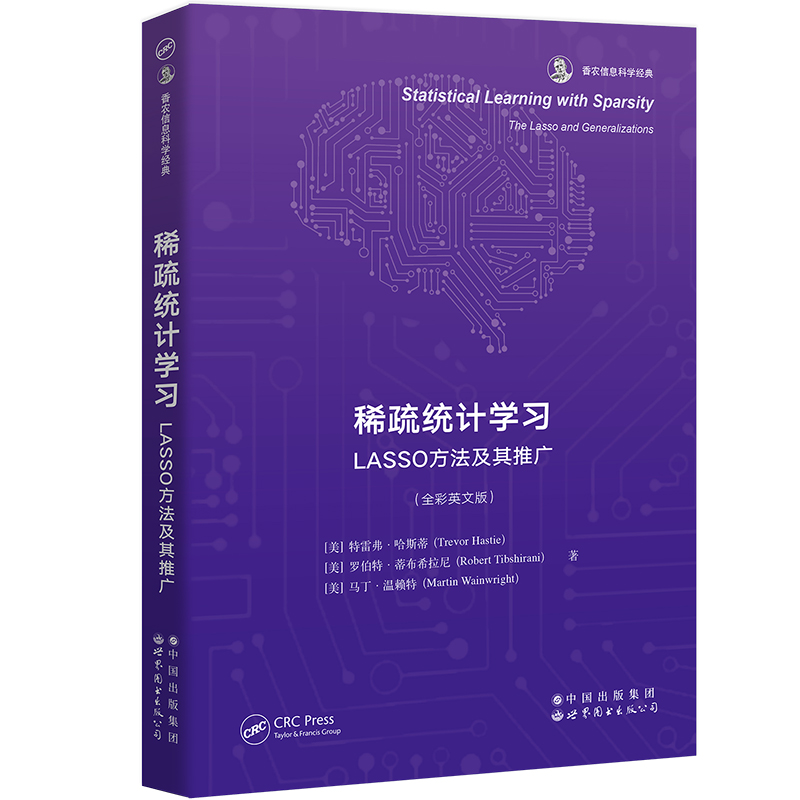- ISBN:9787523201329
- 装帧:平装-胶订
- 册数:暂无
- 重量:暂无
- 开本:其他
- 页数:378
- 出版时间:2023-09-01
- 条形码:9787523201329 ; 978-7-5232-0132-9
内容简介
稀疏统计模型只具有少数非零参数或权重,经典地体现了化繁为简的理念,因而广泛应用于诸多领域。本书就稀疏性统计学习做出总结,以LASSO方法为中心,层层推进,逐渐囊括其他方法,深入探讨诸多稀疏性问题的求解和应用;不仅包含大量的例子和清晰的图表,还附有文献注释和课后练习,是深入学习统计学知识的参考。本书适合计算机科学、统计学和机器学习的学生和研究人员。
目录
作者简介
Trevor Hastie 美国统计学家和计算机科学家,斯坦福大学统计学教授,英国统计学会、国际数理统计协会和美国统计学会会士。Hastie参与开发了R中的大部分统计建模软件和环境,发明了主曲线和主曲面。
Robert Tibshirani 斯坦福大学统计学教授,国际数理统计协会、美国统计学会和加拿大皇家学会会士,1996年COPSS总统奖得主,提出lasso方法。Hastie和Tibshirani都是统计学习领域的泰山北斗,两人合著了The Elements of Statistical Learning,还合作讲授斯坦福大学的公开课“统计学习”。
Martin Wainwright 毕业于MIT,加州大学伯克利分校教授,以对统计与计算交叉学的理论和方法研究而闻名于学界,主要关注高维统计、机器学习、图模型和信息理论。2014年COPSS总统奖得主。
-

昆虫的生存之道
¥12.2¥38.0 -

勒维特之星-大发现系列丛书
¥6.4¥16.0 -

古文诗词中的地球与环境事件
¥12.3¥28.0 -

昆虫采集制作及主要目科简易识别手册
¥15.0¥50.0 -

物理学之美-插图珍藏版
¥20.7¥69.0 -

现代物理学的概念和理论
¥18.4¥68.0 -

星空探奇
¥12.5¥39.0 -

为了人人晓得相对论
¥3.9¥13.5 -

数学的魅力;初等数学概念演绎
¥7.7¥22.0 -

技术史入门
¥14.4¥48.0 -

天演论
¥19.2¥32.0 -

布尔巴基-数学家的秘密社团
¥11.4¥38.0 -

声音简史
¥30.7¥52.0 -

图说相对论(32开平装)
¥13.8¥46.0 -

舟山群岛植物图志
¥15.9¥59.0 -

普林斯顿微积分读本-(修订版)
¥57.4¥99.0 -

考研数学高频考点精选题
¥1.9¥3.2 -

数学 基础模块 下册 随堂练习与测评
¥13.5¥24.6 -

●中国文化知识文库--中国古代天文历法
¥13.5¥45.0 -

壳寡糖生物功能及应用
¥20.9¥38.0












